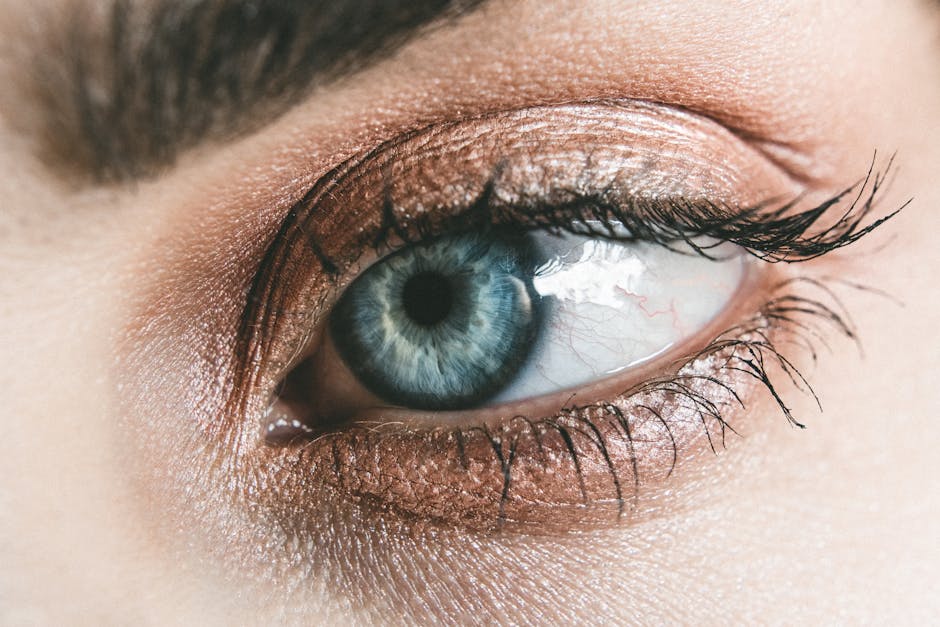Welcome to our latest blog post, where we delve into the captivating world of eyes! From their intricate workings to the fascinating ways they communicate emotions, this article explores the wonders of the windows to the soul. Let’s find out in detail in the article below!
The Intricate Workings of Eyes
Anatomy of the Eye
The human eye is a marvel of design, with its complex structure consisting of various parts that work together to allow us to see the world around us. The cornea, iris, lens, retina, and optic nerve are just a few of the key components that play crucial roles in the visual process. Each part has a specific function, from focusing light onto the retina to transmitting visual information to the brain.
Visual Perception
Once light enters the eye, it passes through the cornea and lens, which help to focus it onto the retina at the back of the eye. The retina contains millions of light-sensitive cells called rods and cones, which convert light into electrochemical signals that are sent to the brain via the optic nerve. The brain then processes these signals to form a visual image, allowing us to perceive the world in intricate detail.
Eye Movements
In addition to the anatomy and visual perception process, the eyes are also capable of intricate movements that are essential for visual tracking and depth perception. Six muscles control each eye’s movement, allowing us to shift our gaze, follow moving objects, and maintain visual stability despite head movements. These precise movements are coordinated by the brain to ensure that both eyes work together seamlessly.
The Expressive Nature of Eyes
Emotional Communication
Our eyes are often referred to as the “windows to the soul” because they can convey a wide range of emotions without a single word being spoken. The subtle movements of the eyebrows, eyelids, and pupils can communicate happiness, sadness, excitement, fear, and many other emotions. The eyes play a vital role in nonverbal communication, allowing us to connect with others on a deeper level.
Cultural Significance
In various cultures around the world, eye contact holds different meanings and significance. In some cultures, prolonged eye contact is a sign of respect and attentiveness, while in others, it may be seen as confrontational or disrespectful. Understanding these cultural nuances is essential for effective communication and building relationships across diverse cultural backgrounds.
Eyes in Art and Literature
Throughout history, artists and writers have been fascinated by the beauty and expressiveness of eyes. Eyes are often depicted as symbols of wisdom, insight, or the gateway to the soul in various artworks and literary works. From the famous “Mona Lisa” with her enigmatic gaze to poems and stories describing the deep, soulful eyes of a character, the portrayal of eyes in art and literature reflects their powerful symbolism and emotional impact.
The Importance of Eye Care
Vision Health
Maintaining good eye health is crucial for preserving our vision and quality of life. Regular eye exams can help detect any underlying conditions early, such as cataracts, glaucoma, or macular degeneration, which can impact vision if left untreated. Additionally, protecting our eyes from harmful UV rays, maintaining a healthy diet rich in vitamins and minerals, and avoiding excessive screen time can all contribute to maintaining optimal vision health.
Preventative Measures
Simple lifestyle changes can go a long way in protecting our eyes from potential damage. Practices such as wearing sunglasses outdoors to shield against UV rays, taking regular breaks from screen time to reduce eye strain, and staying hydrated to prevent dry eyes are easy yet effective ways to care for our eyes. Being mindful of our eye health and adopting preventative measures early on can help preserve our vision for years to come.
The Future of Eye Care
With advancements in technology, the field of eye care continues to evolve, offering innovative solutions for vision correction and eye health management. From laser eye surgery for refractive errors to gene therapy for inherited eye diseases, the future holds promising developments that can revolutionize the way we care for our eyes. By staying informed about these advancements and seeking regular eye care, we can take proactive steps towards maintaining healthy eyesight for a lifetime.
The Intricate Workings of Eyes
Anatomy of the Eye
The human eye is a marvel of design, with its complex structure consisting of various parts that work together to allow us to see the world around us. The cornea, iris, lens, retina, and optic nerve are just a few of the key components that play crucial roles in the visual process. Each part has a specific function, from focusing light onto the retina to transmitting visual information to the brain.
Visual Perception
Once light enters the eye, it passes through the cornea and lens, which help to focus it onto the retina at the back of the eye. The retina contains millions of light-sensitive cells called rods and cones, which convert light into electrochemical signals that are sent to the brain via the optic nerve. The brain then processes these signals to form a visual image, allowing us to perceive the world in intricate detail.
Eye Movements
In addition to the anatomy and visual perception process, the eyes are also capable of intricate movements that are essential for visual tracking and depth perception. Six muscles control each eye’s movement, allowing us to shift our gaze, follow moving objects, and maintain visual stability despite head movements. These precise movements are coordinated by the brain to ensure that both eyes work together seamlessly.
The Expressive Nature of Eyes
Emotional Communication
Our eyes are often referred to as the “windows to the soul” because they can convey a wide range of emotions without a single word being spoken. The subtle movements of the eyebrows, eyelids, and pupils can communicate happiness, sadness, excitement, fear, and many other emotions. The eyes play a vital role in nonverbal communication, allowing us to connect with others on a deeper level.
Cultural Significance
In various cultures around the world, eye contact holds different meanings and significance. In some cultures, prolonged eye contact is a sign of respect and attentiveness, while in others, it may be seen as confrontational or disrespectful. Understanding these cultural nuances is essential for effective communication and building relationships across diverse cultural backgrounds.
Eyes in Art and Literature
Throughout history, artists and writers have been fascinated by the beauty and expressiveness of eyes. Eyes are often depicted as symbols of wisdom, insight, or the gateway to the soul in various artworks and literary works. From the famous “Mona Lisa” with her enigmatic gaze to poems and stories describing the deep, soulful eyes of a character, the portrayal of eyes in art and literature reflects their powerful symbolism and emotional impact.
The Importance of Eye Care
Vision Health
Maintaining good eye health is crucial for preserving our vision and quality of life. Regular eye exams can help detect any underlying conditions early, such as cataracts, glaucoma, or macular degeneration, which can impact vision if left untreated. Additionally, protecting our eyes from harmful UV rays, maintaining a healthy diet rich in vitamins and minerals, and avoiding excessive screen time can all contribute to maintaining optimal vision health.
Preventative Measures
Simple lifestyle changes can go a long way in protecting our eyes from potential damage. Practices such as wearing sunglasses outdoors to shield against UV rays, taking regular breaks from screen time to reduce eye strain, and staying hydrated to prevent dry eyes are easy yet effective ways to care for our eyes. Being mindful of our eye health and adopting preventative measures early on can help preserve our vision for years to come.
The Future of Eye Care
With advancements in technology, the field of eye care continues to






